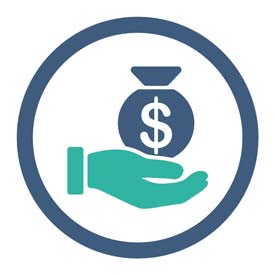
I’ll confess. I’ve been following Jenni Hunt (through Jim Cockrum) for about a year. I know, that’s rather stalker-ish, but I had the best of intentions. Jenni and Jim offer a course on Amazon self-publishing through KDP that has caught my attention more than once. So I selfishly introduced myself to Jenni and asked if she would be willing to write a post for the Marketing Words Blog. She agreed, and she has kindly outlined several zero-inventory strategies that have lit my imagination on fire! I’ll definitely be adding this to my passive income lineup!
I’ll let Jenni take it from here…
———————————————
Although print on demand has been around for hundreds of years, it is very quickly becoming a popular, profitable income stream for many entrepreneurs and small businesses. While there is a large variety of print-on-demand products, my favorite type is books.
Before I lose you, let me be clear — I am not talking about writing your memoir or the next bestselling novel. In fact, I’m here to share a little secret about using Amazon’s self-publishing platform (Kindle Direct Publishing) to publish low-content books for profit that don’t require any (or very little) writing.
It is likely that you’ve heard of Kindle Direct Publishing, otherwise known as Amazon KDP. Usually, when someone hears of Kindle Direct Publishing, they think of e-books that can be read on digital devices like the Kindle.

Guess what? KDP is so much more. KDP is Amazon’s print-on-demand platform for self-published paperback books as well. And this opens a whole new revenue stream for online sellers.
As an author or book creator, you will have no inventory to carry. When you create a book through KDP, Amazon creates a listing for you in their catalog. When the book sells, they print the book and ship to the customer. Amazon then takes their cut and sends you the royalty based on the price you set.
This is great news for online sellers because no inventory translates to no monetary investment! Yep! You can start your KDP income stream with absolutely zero out-of-pocket costs. It is the closest thing to making money out of thin air.
You might be asking, “Okay, Jenni — I get what Amazon KDP is, but what in the world is a low-content book? And how do I publish it?”
This is where KDP gets fun. Traditionally, it can take months, and even years, for an author to write, edit, revise, and rewrite a book before it is ready to be published. One of my favorite strategies to teach entrepreneurs is to use Kindle Direct Publishing as a tool to create low-content books because it is so quick and easy.
What is a low-content book?
Low-content and no-content books are books that aren’t your traditional chapter book. Great examples of a low-content or no-content book are:
- Journals
- Workbooks
- Activity books
- Food or fitness tracking books
- Recipes and cookbooks
- And others
You will be surprised by how much opportunity there is with these types of low-content books. In fact, I often recommend my students take a field trip to a local bookstore and look for low-content books. Head to the gift book section and look at all the different types of journals available.
Browse the activity book aisles and notice the huge variety of Sudoku, coloring, and crossword puzzle books available. Walk through the real estate or cooking area and you’ll find even more low-content books. They are everywhere — and this simply translates to huge opportunity for you.
Of course, the easiest of these types of books to produce is a simple lined journal.

People are amazed when I suggest using Amazon self-publishing to make lined journals because it just couldn’t be this easy, could it? Yes. It can be this easy. Ask any 12- to 32-year-old girl or woman if they have any journals and most would respond Yes.
Lined journals are quick and easy to produce because you can use the same interior for every book. Simply change the cover and publish book after book after book. This is a huge trend right now and if you hit it right, you can profit from these simple low-content books with Amazon’s KDP platform and no out-of-pocket expenses.
Blank lined journals aren’t the only type of low-content book you can create easily. If you visit the gift section of a bookstore, you’ll find what I call “prompt journals” everywhere. A prompt journal provides a word or phrase to prompt the journaler. One popular example is a gratitude journal. Now, this doesn’t have to be complicated. It can have lined pages with a prompt at the top of the page saying, “Today I am grateful for….” This can be a very simple book to produce and the best part is, there are plenty of customers looking for these types of books. This means plenty of opportunity for you.
How Can You Make Money With Low-Content Books?
Now that we have defined what low-content books are, let’s dig into the top three ways to use low-content books for profit.
Discover 5 Easy Ways To Create Printables To Sell
as your free gift for requesting
the Marketing Words newsletter.

I understand that I will also receive weekly articles & videos plus periodic discounts, product notices & more. I can unsubscribe at any time.
 1. Producing book after book on Amazon KDP will eventually produce a profit.
1. Producing book after book on Amazon KDP will eventually produce a profit.
Using keywords in your title and book description will help increase sales opportunity; however, the truth of the matter is, people judge a book by its cover. The strategy I teach is to create 5 to 10 books with the same interior pages, the same keywords and theme, but with different covers. This will help determine what customers are looking for.
For example, if your theme and keywords focus on “unicorn journals,” I recommend creating 5 to 10 unicorn journals that all have the same lined interior pages but each have a different cover. You might create them with:
- A cartoon unicorn.
- Rainbows all over the cover.
- Photograph-type pictures on the cover
- Words only.
Remember, it costs nothing to publish these books and you can learn more about the market you are hitting as you track which covers are driving sales.
2. Bundling Amazon KDP paperback books with other products you’re selling on Amazon.
This is an amazing strategy to differentiate yourself from the competition and get your price point up. Here is an example:
I picked up a set of springform pans from the store to resell on Amazon. I paid $5.99 for the set — but they were only selling for $10.99 on Amazon. If you understand anything about Amazon’s FBA (fulfilled by Amazon) fees, you know that I would need to sell these for at least $16 before it would even the least bit profitable.
However, I had my (then) 13-year-old daughter create a cookbook with recipes that used springform pans. We listed the KDP paperback book on Amazon for $20. We ordered author / wholesale copies of the book from Kindle Direct Publishing for just $3 each, and then bundled the springform pans with the cookbook and sent them in as a bundle to Amazon KDP.
Our total costs were $8.99 for the pans and the book; however, the perceived value of the bundle was $30.99! That breaks down as $10.99 (selling price for the pans) + $20 (selling price for the book). Suddenly the profit margin is looking a whole lot better on that Amazon FBA listing!
Not only that, but because Amazon KDP automatically creates a listing for the book, our price point for the bundled listing has credibility. You can bet some customers are going to check out the book listing on Amazon before buying the bundle. When they see the book price, they will see the value of the listing.
The bonus with this model is that often the book will sell individually as well, and remember — you never have to replenish the book inventory!
3. Partner with other businesses.
 This is another model that requires no out-of-pocket expense but can produce an income very quickly. There are so many influencers online who have an audience that they could serve better by offering them a branded journal, workbook, or tracking book.
This is another model that requires no out-of-pocket expense but can produce an income very quickly. There are so many influencers online who have an audience that they could serve better by offering them a branded journal, workbook, or tracking book.
Business coaches, life coaches, fitness coaches, nutritionists, and more, all ask their clients to track their progress and their goals. This proves to be a huge opportunity to partner by offering to create a tracking journal that has the business name, website, and other marketing information on or in it.
They simply need you to bring the opportunity to them because many have no idea that this is even possible. Most companies are only familiar with traditional publishing methods and understand that there is a hefty cost and risk in creating books for their clients. When they understand the value of using Kindle Direct Publishing to create books on demand (that they can order just 1 book at a time if they want), they are often eager to give you a nice check to get started.
Opportunity is everywhere. It is my hope that this opportunity of using the Amazon self-publishing platform to generate revenue gets your wheels turning with excitement. The process is simple. In fact, my daughter taught herself how to self-publish a journal when she was 13.
There is:
- No writing involved
- No cost to sign up for the Amazon KDP program
- No cost to create and publish books
- No waiting for account approval
- An opportunity to publish as many books as you like.
Amazon’s is one of the easiest print-on-demand platforms to start with. If you are looking for a strategy to grow your profits without investing resources, Kindle Direct Publishing is one of the most powerful starting points available.
Looking for a simple, zero-inventory, passive-income opportunity that will give a nice bump to your bank account without a lot of hassle? Wouldn’t it be great if Jenni and her 16-year-old daughter, Halle, showed you their best strategies for making thousands of dollars a month using Amazon KDP with no inventory and no out-of-pocket fees? (Hint: Yes!)
 Check out her KDP: 10 Books in 10 Days course now for step-by-step training on POD journals for Amazon.
Check out her KDP: 10 Books in 10 Days course now for step-by-step training on POD journals for Amazon.
Have questions about Amazon self-publishing? Talk to me below!
Other Related Posts You’ll Love
How to Make Money on Amazon with No Inventory
How To Sell on Amazon Merch… Zero Inventory, Big Profits



I’ve been talking to some friends this month about creating a journal/calendar. I have it almost all designed, including the cover, but got stalled with getting it printed. I don’t want a downloadable product. This solves my dilemma. Thanks.
Good luck with your sales!
I have started publishing low content books on KDP and really enjoy this. One book I published was a 3 year diary for a teen who wanted one, so I thought others might like it too. Your article gave me more ideas, thanks.
Sounds great! Keep up the good work.